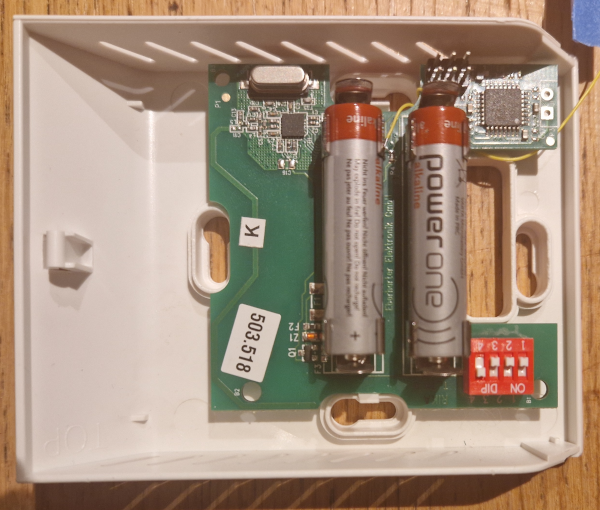Step by step guide to do a custom USB HID device on STM32 using ST CubeMX. There
is already
one page
addressing it but without any details for beginners.
I will use my custom board based on STM32L0,
but any Nucleo can be used by wiring a USB cable to 5V, GND, USB_D+, USB_D-.
Step 1 - CubeMX Open it, start a project to select your processor or board.
- In
Pinouttabconfiguration->peripheral->usband checkDevice (FS). It will tell CubeMX that we want to use USB pins. - You can check
Activate OEif you want to see a led blink when there is traffic on USB lines. Then connect a resistor+led on the pin. - Now, to speed up development, we want to use ST’s USB library, so in
configuration->USB_DeviceselectHuman interface device class (HID). Be sure to avoid custom class, we want ST working example to test our setup. It will generate a mouse device. - Then in the
Clock configurationtab selectUSBCLKfromRC 48 MHZif your µC is compatible: ST implemented a nice feature allowing us to avoid adding an external quartz by trimming internal 48 MHz RC against USB clock sent by the host. If your uC is not crystal-less you must find a way to have accurate 48 MHz onUSBCLK(hint: use HSE) - Then in
Configurationtab selectMiddlewares->USB_Devices. Here you can customize theDevice descriptortab with PID/VID, manufacturer… - Now, generate the project for your IDE.
Step 2 - Test the mouse example First, before modifying anything, we will try
ST’s mouse example. The USB stack is handled by ST’s library so we just need to call it to move the mouse.
- Modify
main.cto declare and initialise data to be send to the computer, inUSER CODE BEGIN 1:
// HID Mouse
struct mouseHID_t {
uint8_t buttons;
int8_t x;
int8_t y;
int8_t wheel;
};
struct mouseHID_t mouseHID;
mouseHID.buttons = 0;
mouseHID.x = 10;
mouseHID.y = 0;
mouseHID.wheel = 0;
- Then send them in
USER CODE BEGIN 3:
// Send HID report
mouseHID.x = 10;
USBD_HID_SendReport(&hUsbDeviceFS, &mouseHID, sizeof(struct mouseHID_t));
HAL_Delay(1000);
Compile, then test: the mouse is now slowly drifting to the right :-)
Step 3 - Modifications for custom HID Now we want to change the mouse example
to our custom descriptor. For this tutorial, we will use the keyboard+consumer
device (media) descriptor explained in my
previous post.
We can add it in Middlewares->...->Src->usbd_hid.c.
Find HID_MOUSE_ReportDesc array and comment or delete it, then add the custom
descriptor.
__ALIGN_BEGIN static uint8_t HID_CUSTOM_ReportDesc[HID_CUSTOM_REPORT_DESC_SIZE] __ALIGN_END = {
// 78 bytes
0x05, 0x01, // Usage Page (Generic Desktop Ctrls)
0x09, 0x06, // Usage (Keyboard)
0xA1, 0x01, // Collection (Application)
0x85, 0x01, // Report ID (1)
0x05, 0x07, // Usage Page (Kbrd/Keypad)
0x75, 0x01, // Report Size (1)
0x95, 0x08, // Report Count (8)
0x19, 0xE0, // Usage Minimum (0xE0)
0x29, 0xE7, // Usage Maximum (0xE7)
0x15, 0x00, // Logical Minimum (0)
0x25, 0x01, // Logical Maximum (1)
0x81, 0x02, // Input (Data,Var,Abs,No Wrap,Linear,Preferred State,No Null Position)
0x95, 0x03, // Report Count (3)
0x75, 0x08, // Report Size (8)
0x15, 0x00, // Logical Minimum (0)
0x25, 0x64, // Logical Maximum (100)
0x05, 0x07, // Usage Page (Kbrd/Keypad)
0x19, 0x00, // Usage Minimum (0x00)
0x29, 0x65, // Usage Maximum (0x65)
0x81, 0x00, // Input (Data,Array,Abs,No Wrap,Linear,Preferred State,No Null Position)
0xC0, // End Collection
0x05, 0x0C, // Usage Page (Consumer)
0x09, 0x01, // Usage (Consumer Control)
0xA1, 0x01, // Collection (Application)
0x85, 0x02, // Report ID (2)
0x05, 0x0C, // Usage Page (Consumer)
0x15, 0x00, // Logical Minimum (0)
0x25, 0x01, // Logical Maximum (1)
0x75, 0x01, // Report Size (1)
0x95, 0x08, // Report Count (8)
0x09, 0xB5, // Usage (Scan Next Track)
0x09, 0xB6, // Usage (Scan Previous Track)
0x09, 0xB7, // Usage (Stop)
0x09, 0xB8, // Usage (Eject)
0x09, 0xCD, // Usage (Play/Pause)
0x09, 0xE2, // Usage (Mute)
0x09, 0xE9, // Usage (Volume Increment)
0x09, 0xEA, // Usage (Volume Decrement)
0x81, 0x02, // Input (Data,Var,Abs,No Wrap,Linear,Preferred State,No Null Position)
0xC0, // End Collection
};
Then in USBD_HID_CfgDesc change
bInterfaceSubClassto0, the keyboard does not respect boot specificationsnInterfaceProtocolto1(keyboard)
All references to mouse in the file should be changed to custom.
In Middlewares->...->Src->usbd_hid.h, change:
HID_EPIN_SIZEto5, the max report sizeHID_CUSTOM_REPORT_DESC_SIZEto78, the length of our new descriptor.
Finally in main.c:
Add reports initialization in USER CODE BEGIN 1
// HID Keyboard
struct keyboardHID_t {
uint8_t id;
uint8_t modifiers;
uint8_t key1;
uint8_t key2;
uint8_t key3;
};
struct keyboardHID_t keyboardHID;
keyboardHID.id = 1;
keyboardHID.modifiers = 0;
keyboardHID.key1 = 0;
keyboardHID.key2 = 0;
keyboardHID.key3 = 0;
// HID Media
struct mediaHID_t {
uint8_t id;
uint8_t keys;
};
struct mediaHID_t mediaHID;
mediaHID.id = 2;
mediaHID.keys = 0;
And send it in USER CODE BEGIN 3
// Send HID report
mediaHID.keys = USB_HID_VOL_DEC;
USBD_HID_SendReport(&hUsbDeviceFS, &mediaHID, sizeof(struct mediaHID_t));
HAL_Delay(30);
mediaHID.keys = 0;
USBD_HID_SendReport(&hUsbDeviceFS, &mediaHID, sizeof(struct mediaHID_t));
HAL_Delay(30);
keyboardHID.modifiers = USB_HID_MODIFIER_RIGHT_SHIFT;
keyboardHID.key1 = USB_HID_KEY_L;
USBD_HID_SendReport(&hUsbDeviceFS, &keyboardHID, sizeof(struct keyboardHID_t));
HAL_Delay(30);
keyboardHID.modifiers = 0;
keyboardHID.key1 = 0;
USBD_HID_SendReport(&hUsbDeviceFS, &keyboardHID, sizeof(struct keyboardHID_t));
Note: There is no need to use two structures if memory optimization is required, but it simplifies the example.
Compile, send to uC and…
The volume is decreasing while ‘L’ characters appear on your screen :-)
Full code can be found on Github, and commit diff from example is there.
Edit 21/02/17: Correction of consumer control descriptor size


Share this post
Twitter
Google+
Facebook
Reddit
LinkedIn
StumbleUpon
Pinterest
Email